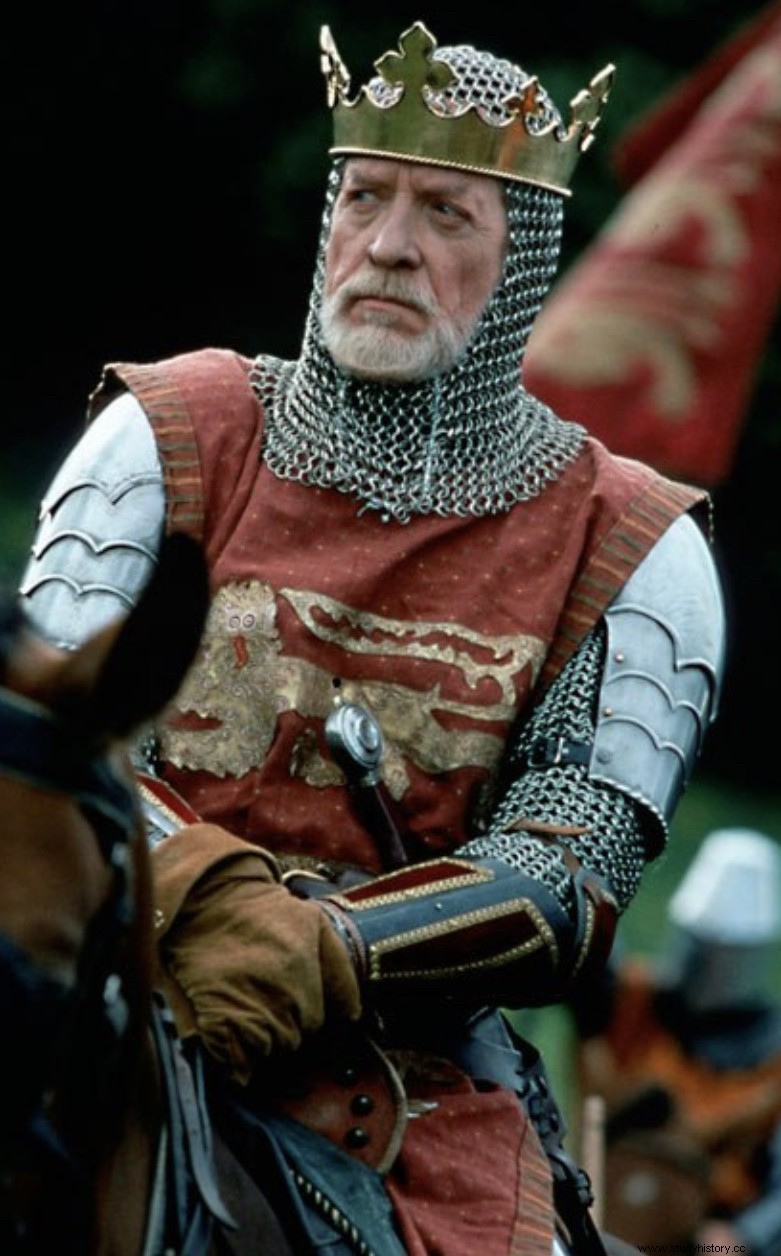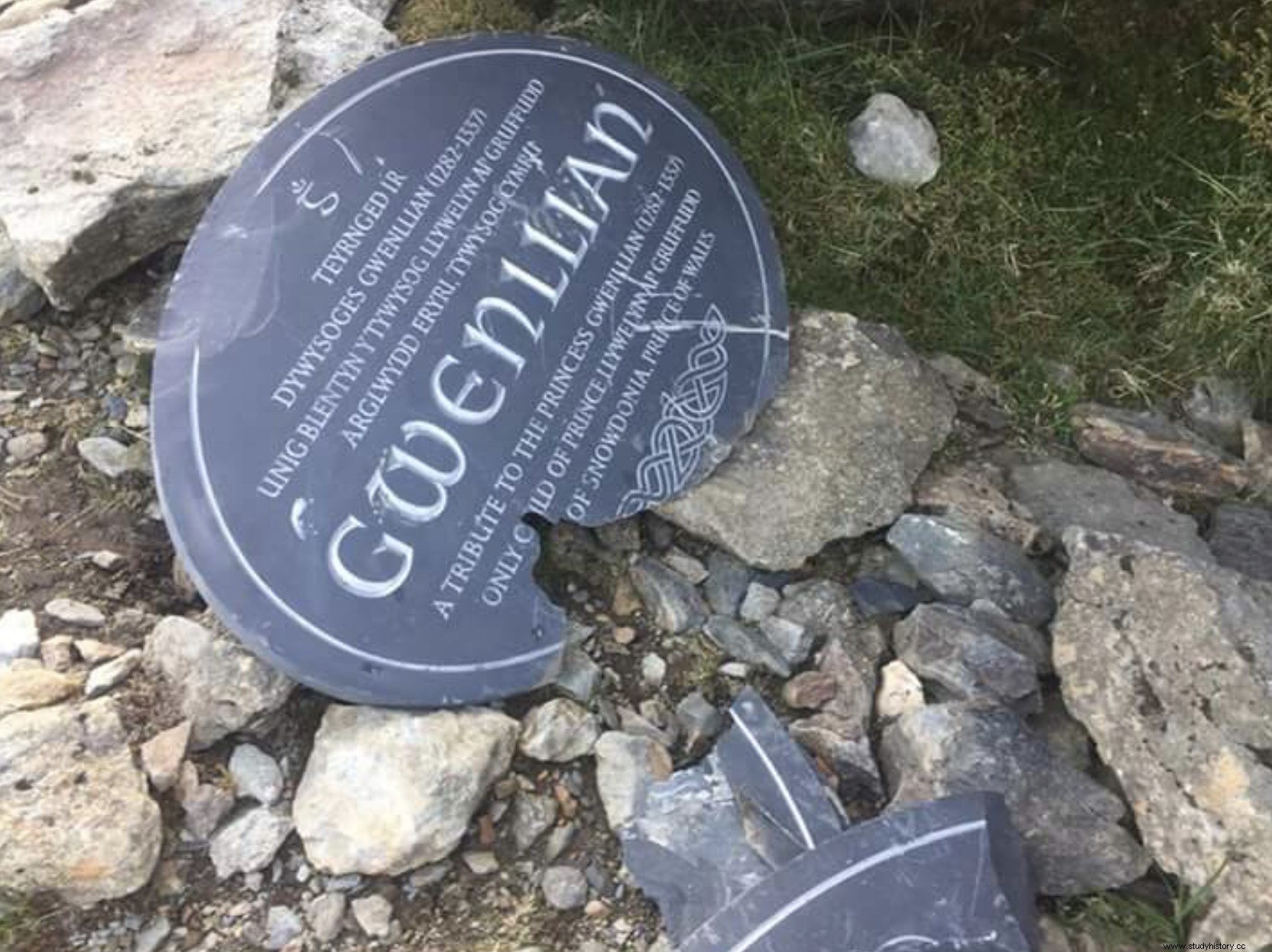It might be thought that a woman of the Middle Ages whose father was a Prince of Wales and whose mother was herself the daughter of an English princess and earl was destined to have a good life. And those life expectancies would seem even better if we take into account that the three kings of England during whose governments this woman lived were her close family (uncle, cousin and second nephew of her mother). Nothing could be further from the truth; the woman we are referring to, Gwenllian of Wales, was forced to spend 54 of her 55 years of life locked up against her will in an English convent. In fact, it was those three English kings that we have mentioned who decided, one after another, that Gwenllian should remain captive without allowing her to be free and without her committing a single crime that would justify her maintenance in what was still a prison far from his homeland.
Gwenllian was born in June 1282 in Wales. Her father was Llywelyn ap Gruffudd, the only Welshman to be officially recognized by England in a treaty with the title of Prince of Wales. Her mother was Leonor Montfort, who in turn was the daughter of Simon de Montfort.

Both the names of Llywelyn and Simon de Montfort will sound familiar to the regulars of the blog (in the links you can read the entries dedicated to each of them). Both characters had something in common:both had become mortal enemies of Edward I of England at some point in their lives. And Longshanks he was not a man to have as an enemy, as Scotsman William Wallace was able to verify years later.
Due to this feud, Edward I was not going to easily allow the marriage between Llywelyn and Eleanor de Montfort to be consummated. Her father had dominated England for two years keeping Edward and her father Henry III prisoners. Although Edward had finally defeated and executed him, making a member of the de Montfort family Princess of Wales when barely ten years had passed since his death could become a hitching pennant for disaffected Edward's reign.
The English boarded the ship in which Eleanor was traveling on her way to Wales to get married, seized her and took her to London. He would spend the next three years in the Tower until Edward conquered Wales in 1278 and humiliated his prince by forcing him to take an oath of allegiance to him in Chester. The wedding between Llywelyn and Eleanor could now take place, but Edward did not allow them to marry in Wales as would have been normal. They had to do it in Worcester.
In the following years, the coexistence between the English and the Welsh became more and more complicated, until the latent tensions finally erupted into open conflict in March 1282. Edward set out to put an end to the Welsh problem once and for all. It was a very uneven fight. In less than a year they had conquered all of Wales. Llywelyn was killed in a skirmish on December 11, 1282.
Only six months earlier Eleanor de Montfort had given birth to a daughter. A childbirth in the Middle Ages was a situation of serious risk for the life of both the mother and the child. In this case, it was Leonor who did not survive the birth and died shortly after the birth of Gwenllian, who was therefore left without a father and mother at only six months old. She was taken in by the family of Llywelyn's brother and true ringleader of the 1282 rebellion, Dafydd.
In June 1283 Dafydd, his wife, his children, and little Gwenllian were captured. Dafydd was brutally executed, his sons imprisoned, and his daughters and his niece, Gwenllian, sent to different religious establishments in England. Gwenllian, who was only one year old, was confined at Sempringham Priory, near Lincoln. She belonged to the Gilbertine order, the only entirely English religious community, founded by Saint Gilbert and in Sempringham there were two communities, one male and one female, in separate facilities.
One might think that a one-year-old girl did not pose any danger to the extremely powerful Edward I of England, but he did not trust the symbol that a daughter of the great Llywelyn could become for the riotous Welsh (in fact, in the year 1294 there was another general uprising in the country against English rule). There is evidence that both Edward I and Edward II at one time or another requested information on the condition of the young woman, who was possibly aware of her importance and of her Welsh family connections, although it seems that she did not speak the language of a country of the which came out less than a year old.
Edward III granted him a pension of £20 a year and he must have seen her when he visited Sempringham in 1328. But this did not change his status as a captive, which remained until his death on June 7, 1337. almost all of his 55 years of life in Sempringham.
Although she did not have any participation in the history of her native Wales, her sad vital vicissitudes (derived from being the daughter of the last Prince of Wales, a native of the country, whom Edward I deprived of all future) meant that over time she became a symbol for the Welsh. Although his grave was lost following the Anglican reform that ended monasteries in the 16th century, in 1993 a plaque was placed near the church of St Andrew in Sempringham, which is the one that heads this entry, and reads: In memory of Gwenllian, daughter of the last Prince of Wales. Born in Abergwyngregyn 12.06.1282. Died at Sempringham 7.6.1337. She was kept as a prisoner for 54 years.
Also, in 2009 a mountain in Snowdonia, Wales that was known as Carnedd Uchaf was renamed Carnedd Gwenllian in her honour. But it seems that not everyone liked this reminder of Welsh pride against English conquest. In June 2018, the plate to which we have referred was stolen from its location and when it appeared it had been severely damaged, as can be seen in the following image. But this only gave greater interest to the sad story of the woman who, without committing any criminal act in her life that justified it, spent her entire life in forced captivity.

